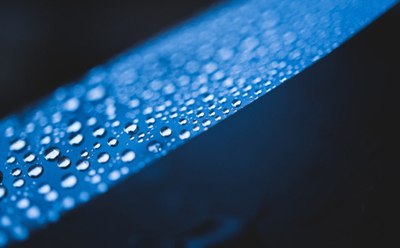Hydrophobic Polymers

Hydrophobic polymers are engineered to repel water and resist interaction with polar solvents. Composed of non-polar molecular structures, these polymers—including polyethylene, PTFE, polystyrene, and certain silicones—exhibit low surface energy and excellent chemical stability. Their water-repelling properties make them ideal for applications requiring moisture barriers, chemical resistance, or low-friction surfaces. From protective coatings and waterproof films to biomedical implants and microfluidic devices, hydrophobic polymers enable innovation in environments where water must be excluded.
Breakthroughs feel closer than ever with our comprehensive portfolio of hydrophobic polymers, classified according to chemical class and monomer functionality.
Products
Popular Filters
Products
Related Resources
- Material Matters™ Publication Registration
Material Matters™ is a publication dedicated to addressing your research needs in materials science and nanotechnology. The issues, published quarterly, are thematic in content and feature technical reviews by leading experts. In addition, application notes and relevant products and services are highlighted.
Acrylic Polymers
Acrylics include various acrylic, acrylonitrile, acrylamide, and maleic anhydride polymers. These homo- and co-polymers have rigid, flexible, hydrophilic, or hydrophobic properties. Most of these polymers are thermoplastics and can be readily converted into a desired shape by a thermal process. Hence, they are commonly used in polymer coatings, adhesives, and fibers.
Ether Polymers
Ethers have ether functionality in the main chain. They tend to be flexible and provide impact resistance to bulk properties. Many polyethers have functional groups at their chain ends and are used to prepare higher molecular weight polymers. Thus, they could also be classified as macromonomers and are commonly used in the preparation of polyesters and polyurethanes. Poly(propylene glycol) polymers and oligomers (DOWANOL®) are included in this category.
Fluorocarbon Polymers
Fluorocarbon polymers are unique materials in that the polymer is not "wet" by hydrophilic or hydrophobic materials. They have very low coefficients of friction and have outstanding chemical and thermal resistance properties. Copolymers can be melt-processed more readily than poly(tetra-fluoroethylene).
Polystyrene Polymers
Polystyrene and its copolymers have found important applications as films, foams, and structural components. Copolymers with diene monomers are cross-linked to improve physical properties and generate thermoplastic elastomers. Polystyrene film is highly transparent to visible radiation and has a high refractive index.
Poly(vinyl chloride) Polymers
Poly(vinyl chloride) (PVC) is often highly plasticized to improve rheology for melt processing. It is highly susceptible to UV and high-temperature degradation and stabilizers are commonly added.
Poly(N-vinylpyrrolidone) (PVP) Polymers
Poly(N-vinylpyrrolidone) (PVP) is a polar polymer with excellent film-forming and adhesion properties. It is commonly used in formulating hair sprays and hand creams as well as in the textile industry due to its affinity for many dyestuffs. PVP is a biocompatible polymer that has been used as a blood plasma substitute, although this application is becoming uncommon.
To continue reading please sign in or create an account.
Don't Have An Account?